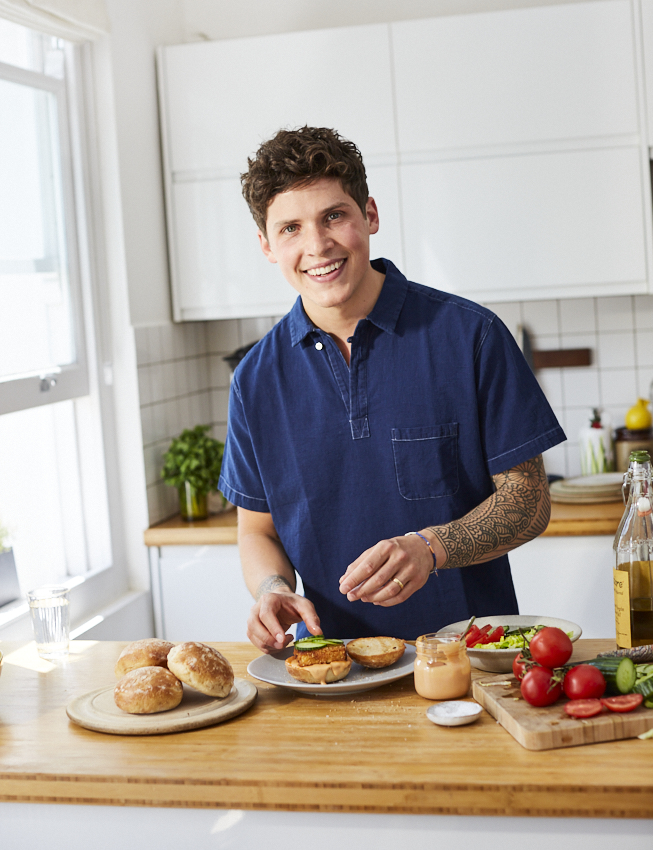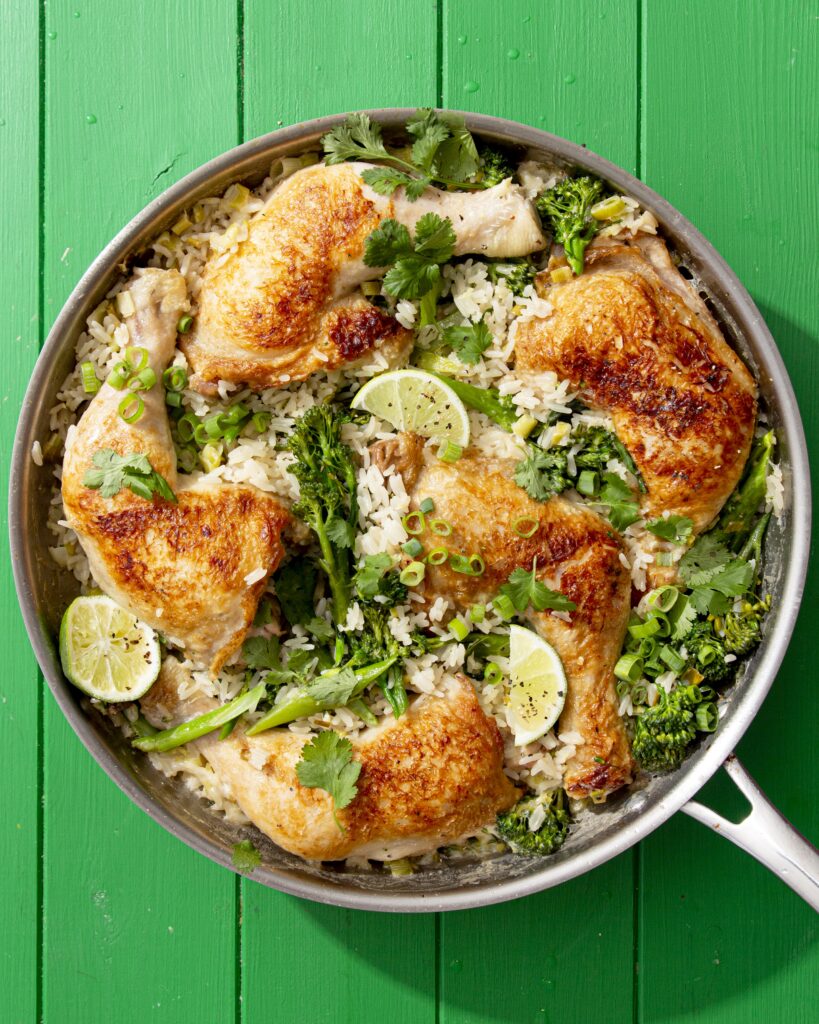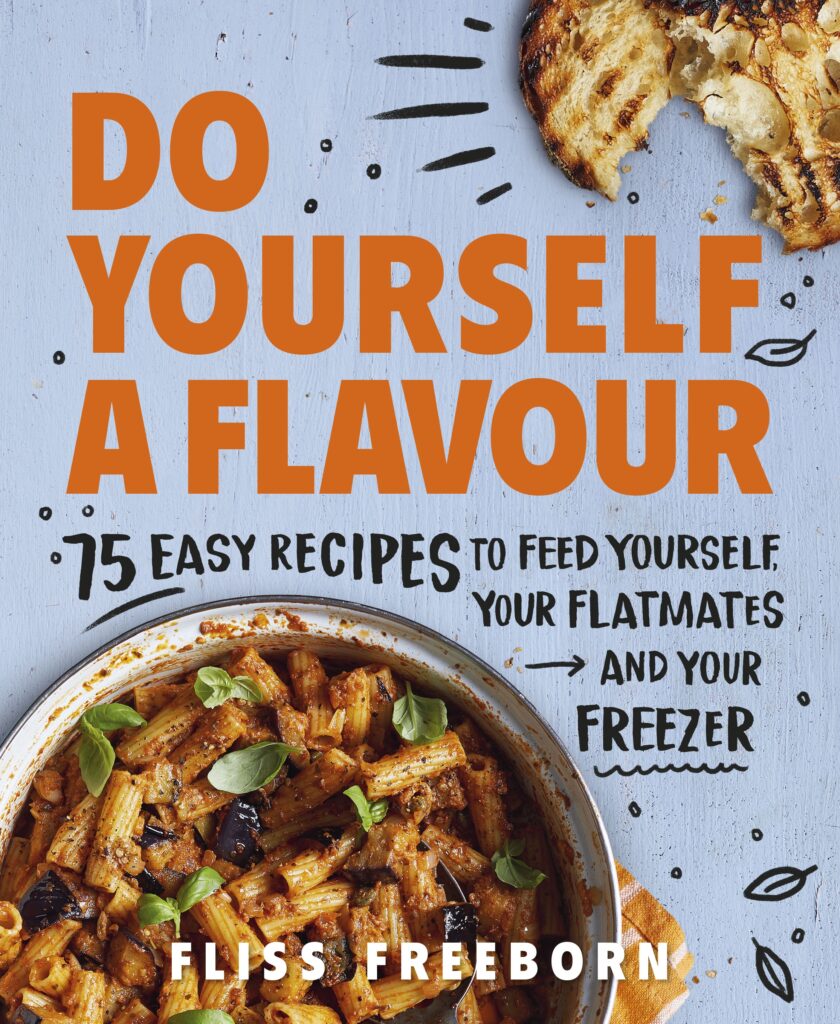
In this month’s edition of Maldon’s Cookbook Club, we have partnered up with Penguin Books to explore the culinary masterpieces of Fliss Freeborn.
Fliss has been writing about food since she was 8 years old, where her first ‘cookbook‘ featured recipes including clotted cream and golden syrup on toast! It was her love for cooking which allowed her to share recipes and quirky takes on food through her own blog, ‘Student Cuisine for the Gloomy Teen’. The great success of the blog eventually led Fliss to winning the award for best cookery writing at the 2023 Fortnum & Mason Food and Drink Awards – an amazing achievement!
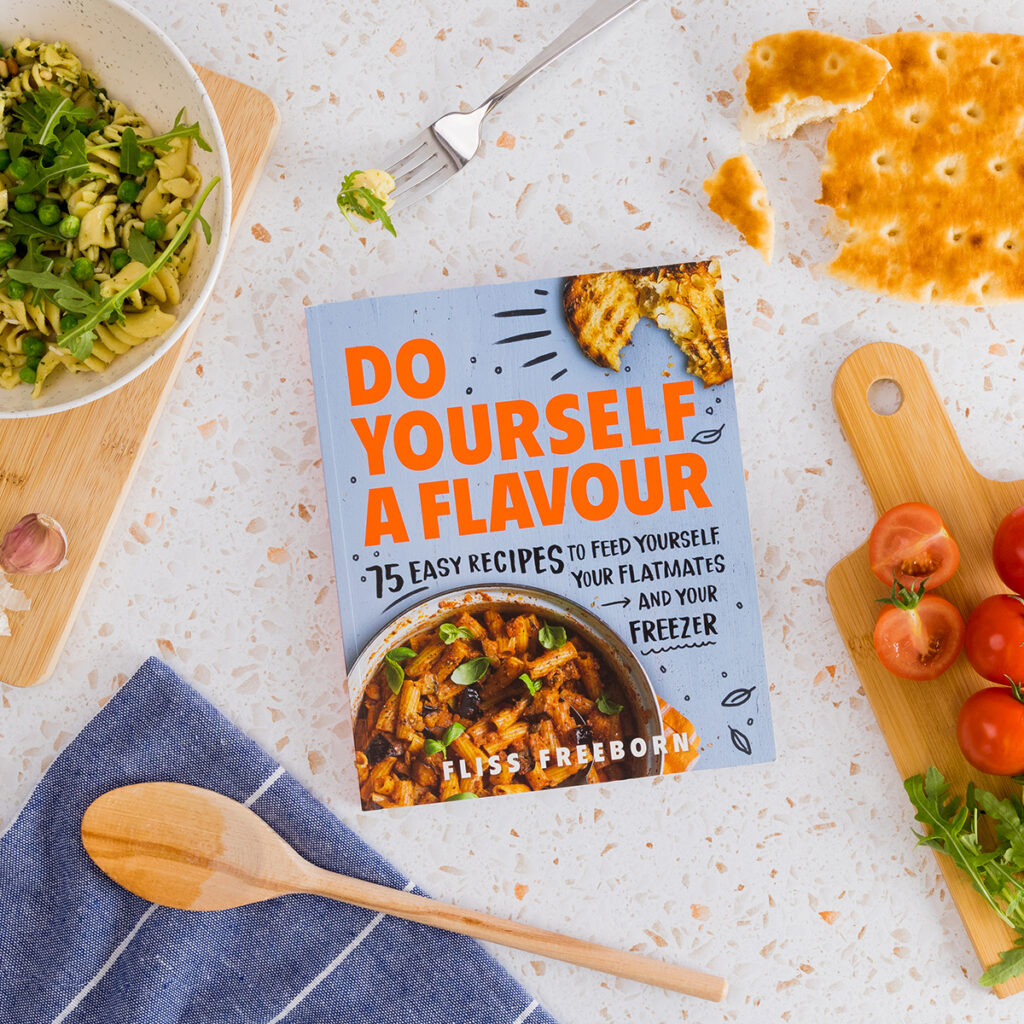
And the excitement doesn’t stop there…June 27th was the date in which Fliss released her debut cookbook: ‘Do Yourself a Flavour‘.
If you are a young person wanting to expand your culinary skills beyond basic pot noodles and beans on toast, than this cookbook will be your best friend! Too well does Fliss understand the struggles of cooking during university on a restrictive budget. She wants show people that you too can create delicious tasting foods without breaking the bank or needing the latest kitchen accessory!
With a collection of over 75 recipes to choose from, you’ll find yourself reading the chapters of speedy meals, tasty dinners and crowd-pleasing feasts. If you like the ‘sweeter’ things in life, she also offers easy sweet treats and bakes. Hilariously, she also dedicates a few pages for feeding the drunk or when you are hungover – which can be a real life-saver!
The cookbook is also brimming with tips and tricks, from using up leftovers to cooking for the freezer – this is truly the ultimate ‘foodie’ guide for any young person looking to advance their cooking.
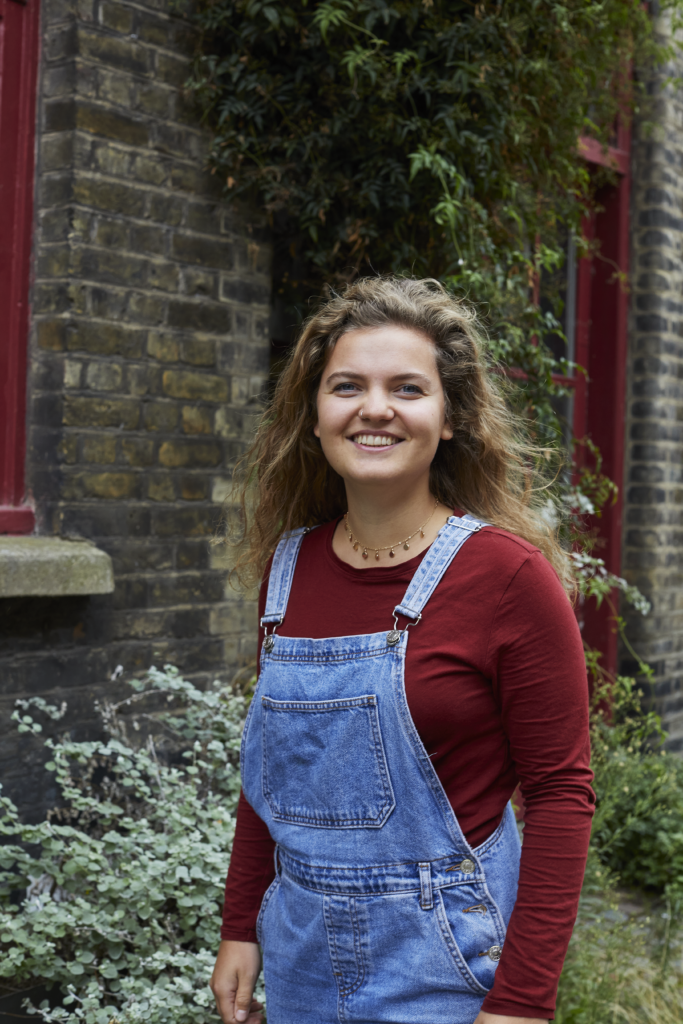
In Conversation with Fliss Freeborn…
When Fliss had a spare minute from cooking, we had our notepad and pen at the ready, wanting to get to know Fliss on a more personal level. We touch upon her inspirations behind the cookbook to her own top tips for people wanting to learn how to cook. We also look into what a normal day in the life looks like for Fliss!
Fliss, we are obsessed with your cookbook ‘Do Yourself a Flavour’. Tell us, where did your love for cooking first come from?
My parents considered cooking from scratch to be a non-negotiable life-skill, so I was lucky enough to have been encouraged in the kitchen from a very young age. I even had one of those high-chairs which clamped to the kitchen counter to save space – my parent’s first kitchen was tiny but they still wanted to involve me with everything. My dad used to make me taste and smell everything that was going into the cooking pot, which included all the different herbs and spices from the rack mounted on the wall. I then started baking at the age of around six, and I was obsessed with that for a good few years – it was during the crazy cupcake craze of 2008-2012 that I got really into cake decoration, which gave me the confidence to experiment with proper meals later on in my teenage years.
Your book has a collection of recipes to help people cook tasty food without breaking the bank – is this something that is important to you?
Yes. My parents split up when I was 14 or so, and to help out, I took over the majority of the cooking and food shopping. We’d never been a financially stable family due to my dad being an entrepreneur with several different businesses which he had to keep afloat – something which I was very much made aware of as a child – so our food budget was never enormous. I am very privileged to have never gone hungry, and to have had lots of educational opportunities given to me, but making food stretch as far as possible and not wasting anything was key in our household, as I’m sure it was in many others. It’s very important to me that we learn to be respectful of the ingredients we’re working with – even if they come, like mine do, from a budget supermarket. Knowing how to make something tasty out of a few cheaper ingredients is a precious skill to have, so I’m thrilled to be able to pass on this knowledge in the book.
There’s plenty of tips and tricks in your book to help young people expand their love for cooking! What would be your main top tips for people wanting to learn how to cook?
As Mary Poppins once said: find the fun and snap: the job’s a game. If you don’t enjoy cooking, it’s always going to be a chore, so find out what sort of things you like to eat and then see if you can find the joy in figuring out how to make it yourself. My second tip is to trust your instincts – you don’t have to be a slave to the recipe. If you taste it and you think it needs more cumin, add more cumin. I say in the book that you have to imagine you have a nonna on your shoulder – if she says ‘a splash more’ you add a splash more. And lastly, slightly antagonistically to that previous tip, do things slowly and carefully at first – you can always add, but you can’t take-away!
There are over 75 delicious recipes to choose from…come on, you must have a favourite!
Ah the age old favourite child question. Well, just like my mother, I do have a favourite* – it’s the mussel linguine, which I originally wrote out as a series of limericks but it’s in there as a conventional recipe too. It uses one of those cheap packets of pre-cooked mussels that lots of people bypass at the supermarket, but amps it up using lots of fresh parsley, lemon zest, chilli and cherry tomatoes. It’s a really uplifting dish.
*Big joke. Huge joke. It’s both me and my brother. We are her favourite. Ahem.
We love the humour of your cookbook, from the title to the catchy chapters; is this your way of showing people to have more fun with cooking?
Yes, I suppose it is – that’s something I hadn’t really considered before, seeing as my writing is simply a direct reflection of the way my brain works. I’m thrilled that my turn of phrase makes sense to other people when it comes to descriptions in my recipes. The humour is also probably subconscious response to the fact that many recipes are written in more or less the same way: do this, add this, stir that and serve. Mine are somewhat – ok, very much – more playful but I still hope are just as functional as those without the humour.
What does a normal day in the life look for you Fliss?
I travel a lot, and also do a lot of ad-hoc temporary work, so having a routine feels like wearing a straightjacket to me: a ‘normal’ day is kind of hard to pin down. To answer your question though, let me take you through what sometimes happens when I’m at home in Glasgow with no direct employer-related obligations.
I’ll wake up at about 9am (sorry, everyone) and then make three cubic feet of tea while having good old scroll through some cat videos, many of which I send to my boyfriend who is already being a productive human at work. Then, I’ll answer some emails and doomscroll Twitter until my social media time limit kicks in, which is always a good reminder to do something useful, like hang up the washing I forgot about yesterday.
I don’t get hungry til around 11:30 usually, and I answer the call of my stomach with whatever I can find in the fridge, which is usually cheese, or maybe some olives, or bread if I’ve made some. Then, I panic about all the things I have to do, so I’ll either have a shower, or go for a brief and hateful jog to delay actually doing the things, before heading to the library or a coffee shop to do some writing. And some more panicking for good measure.
By 3.30pm I’m hungry and restless and ready to buy whatever anyone wants to sell me, so I might head to the local bakery for a spot of cash haemorrhaging before returning home to eat whatever I’ve bought with plenty of salted butter – and possibly a salad if I’m feeling virtuous. After lunch, I start thinking about dinner.
(The above holds unless I’m on a fun writing project, where I can zone everything out including hunger signals, and only exit my trance-like state when I realised I’ve also been needing to pee for the last 12 hours. This trance-like state can continue for about four days, after which I need a holiday to the Maldives but will make do with thinking about sand.)
In the evening, we’ll often be hosting a friend or two for tea. I’ll have planned what I’m making before I invite them, and I’ll usually have done a pudding in advance. If we’re not hosting, we’re meeting pals at the pub. I say we, because at this point, my chap has arrived home from work, so I can show him cat videos in person. But whether we’ve been pubbing, entertaining, working, or simply lounging about watching Taskmaster, we tend to head to bed around 11:30pm where I am guaranteed to have some sort of ridiculous dream sequence involving fish which I’ll have to write down in the notebook on the nightstand at 4am.
What a charmed and peaceful life I lead!
Name three things in the kitchen you simply can’t live without!
Salt, lemons, microplane grater. Easy. And brief because I talked too much in the last one.

Sicilian-Style Aubergine Stew
Whenever Fliss asks her friends what they’d like to eat, they never really have a clue, to which she suggests either a curry, roast, a risotto or perhaps a ‘caponata’.
‘A caponata?’…
It a sour Sicilian stew made with lots of olive oil, aubergines, tomatoes and capers, lifted by a heavy hit of red wine vinegar. You can use pine nuts to this dish, but Fliss likes to use chopped almonds for a more heartier crunch!
This recipe is closely based on a caponata but with more flexibility on the ingredients. It freezes well, so if cooking for fewer than four people, you can save portions for another rainy day!
Serves: 4 as a main, 6 as a side
Prep Time: 30 minutes
Cooking Time: 1 hour, plus 2-4 hours resting on the hob
Ingredients:
- a third of a mug of good olive oil
- 2 large or 3 smaller aubergines
- 4 shallots, if you can find them, or 2 medium white onions if you can’t
- 2 garlic cloves (optional)
- 2 tins of chopped tomatoes or peeled plum tomatoes
- a tablespoon of raisins (exceedingly optional, but very authentic)
- 2 tablespoons of double-concentrated tomato purée
- a smallish glass or half a mug of red wine (about 150ml)
- a good tablespoon of capers (if your palate hasn’t yet reached maturity, you may leave these delicious morsels out)
- 2 tablespoons of pitted olives, or more if you like them (I’ll use whatever’s in the cupboard or fridge; it doesn’t matter if they’re green or black. Again, if you’re not a culinary chad, you can leave these out)
- 4–5 tablespoons of EITHER (in order of preference) red wine vinegar, balsamic vinegar, white wine vinegar or malt vinegar
- salt and freshly ground black pepper
- 2 tablespoons of pine nuts, if the budget allows, or the same quantity of chopped almonds if it doesn’t, to serve
- A pinch of Maldon Salt
- a good handful of fresh basil, if you want, to serve
Method:
- Pour your olive oil into a large, deep saucepan – it should definitely cover the bottom and come up the sides a little. Place over a medium heat. As it warms up, roughly chop your aubergines into oblongs of around 2–3cm. Add them to the pan, along with some salt, and fry them, stirring often, until the oil has soaked in and there’s a little bit of golden-brown colouring on the flesh – around 6–8 minutes. You may need to do this in batches to get some properly nice browning.
- Just as the aubergines are colouring, remove them from the pan and set aside in a bowl – you’ll want them again in just a minute. There should be a small amount of olive oil left in the pan. Finely chop and fry your shallots or onions with a pinch of salt in this oil, adding more if necessary. Cover until they’re translucent and cooked through, around 10 minutes. Add the garlic halfway if you’re using it. Then, return the aubergines to the pan and fry for a little longer. Next, add your tins of chopped tomatoes, breaking up any plum ones with a spoon as you go. Add a good pinch of salt now, and a grinding of black pepper, along with your raisins, if they’re going in. Squeeze in the tomato purée and add the red wine, then stir and simmer for around 45 minutes–1 hour with a lid on.
- Once that time is up, stretch and have a cup of tea, then take the chance to add the capers and olives, if using. Next, pour in your vinegar. It should smell really sour at this point, and have a good acidic top note when you taste it, but with a deep richness underneath from all that previous simmering.
- Adjust for seasoning (does it need acidity? Or perhaps more Maldon Salt? Or maybe it’s too tangy for you and you need a splash of olive oil? When you’re happy, let it simmer – uncovered – for around 10 minutes while you doom-scroll. You can serve it now, but it’s much better if you switch off the heat and leave it on the hob to meld for a few hours, reheating when you want to serve it.
- To serve, toast the almonds or pine nuts in a dry frying pan and scatter them over the pot, along with some torn fresh basil leaves.
- Caponata is usually served as a side, but we’ve taken to having this dish as part of an Italian-themed main, served with lots of focaccia, some antipasti, such as artichokes and salami, and a huge green salad.
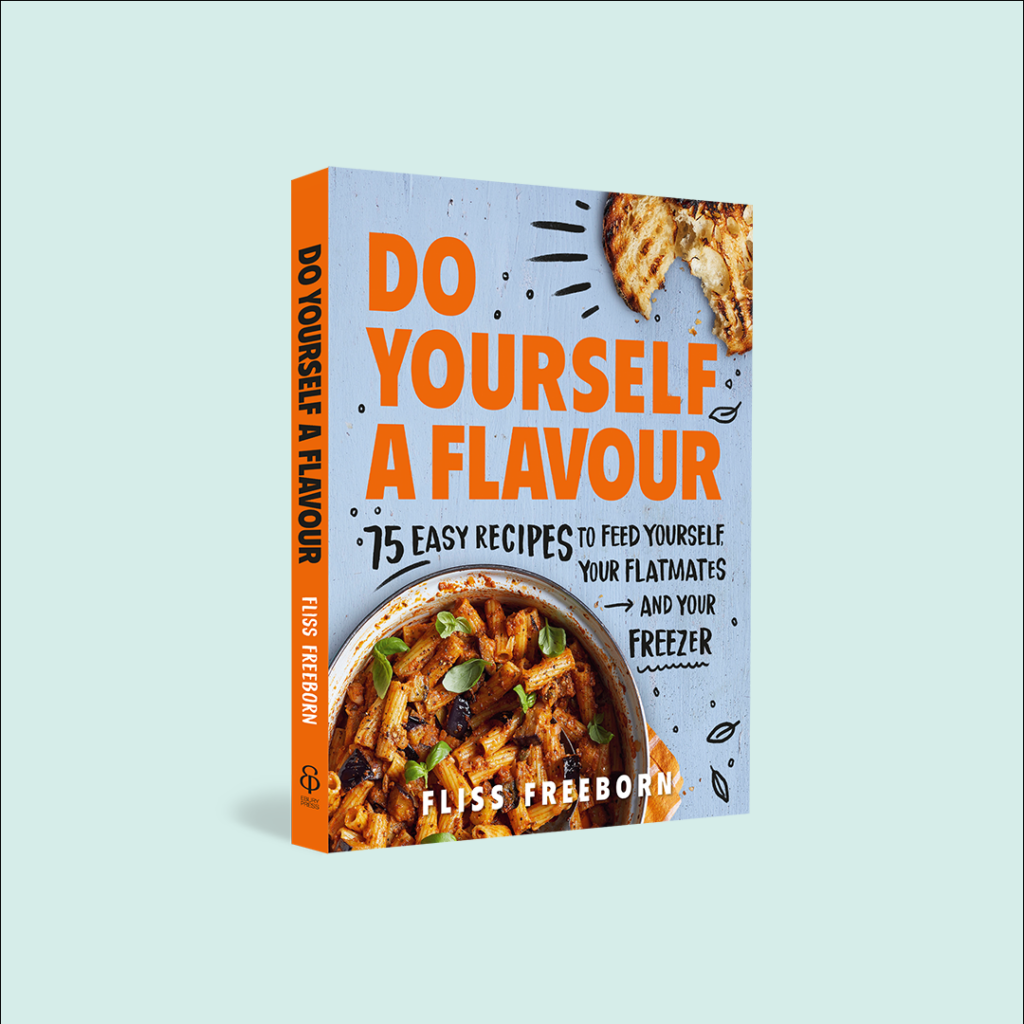
Want to create a recipe from this book?!
You can find where to purchase Fliss’ cookbook here and start getting creative in the kitchen!
Make sure you have your Maldon Salt ready for these recipes! If you are running out, please feel free to browse on our Where to Buy Page to find your nearest store in which stocks our beloved Maldon Salt.
Lastly, we LOVE seeing your creations – please tag us on Instagram using the #maldonsalt so we can share your own take on Fliss’ recipes!
